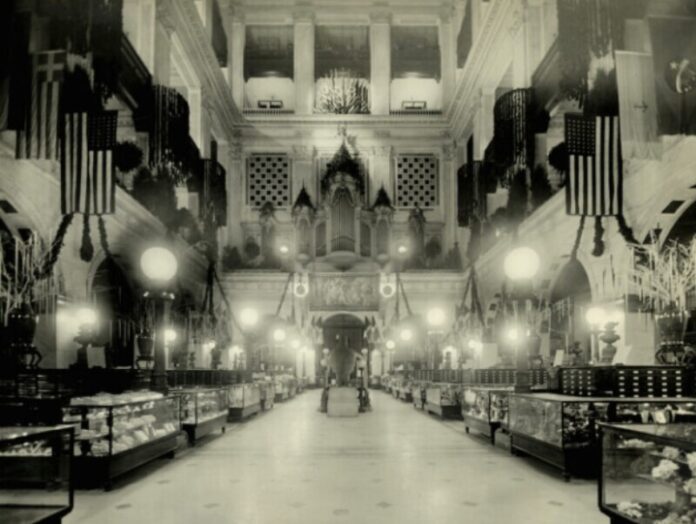
January has long been known in retail circles as “White Sale” month. In the beginning, it was a time when stores put linens –bed and bath — on sale as the world headed into winter. Since this month has always been a slow time in the retail industry, the first such sale took place in 1878 at Wanamaker’s Department Store in Philadelphia. From there it spread around the world. At that time, sheets and towels only came in white, thus the name “white sale.”
John Wanamaker was the enterprising soul who came up with the idea of the White Sale. He actually founded the first department store in the United States in 1876. It was modeled after those in Europe, the first being Le Bon Marché Rive Gauche in Paris, France opened in 1852 as a means of “thrilling the senses.” It was founded by husband and wife duo Aristide and Marguerite Boucicaut. It is still open in Paris to this day offering high end merchandise to the selective shopper.
“Wanamaker believed that retail business should be founded on four principles: a single price for all customers, a full guarantee on purchases, cash payment, and cash returned,” explains the Jennifer Adams website. “He was the first to use an official price tag; before his innovation, purchase prices were generally settled by haggling. Wanamaker also introduced some elements that would forever change the experience of shopping for customers. Among other things, he opened the first in-store restaurant, installed the first in-store electrical lighting, and added the first in-store elevators.”
Although he developed the White Sale to increase sales during a slow month in his stores, Wanamaker was scrupulously honest in his advertising. As a matter of fact, his was the first department store to hire a full-time copywriter to develop newspaper advertising to promote his business. Previous to that time, the newspaper created the ads. This way, Wanamaker kept control of what was said and shown in his ads.
Since winter was a time when the women of the home would mend linens and begin the process of cleaning the home for Spring, it was a good time to offer these times to replace those that were better off becoming rags.
It remains a White Sale in spite of the fact that sheets and towels now come in a rainbow of colors, however, that didn’t happen until the middle of the 20th century. Today, all housewares have been added into the mix. This gives homeowners a chance to think about redecorating, reorganizing and even remodeling during the winter months in preparation of Spring activities.
Just about every retail store has discounted offerings on bedspreads, duvets, pillows, towels, rugs, sheets, furniture and home décor during the month of January. Some offer discounts as high as 80%. Just as in Wanamaker’s day, it is an opportunity for stores selling home goods to get rid of excess stock at a time when customers are thinking in that direction.
We continue to see White Sales as a “fresh start for a new year,” and the color continues to be associated with the coming of a new year and a new beginning. Symbolically, the color white has long been associated with purity and freshness, simplicity and cleanliness. Like a blank canvas ready to be painted upon, also made out of white fabric.















